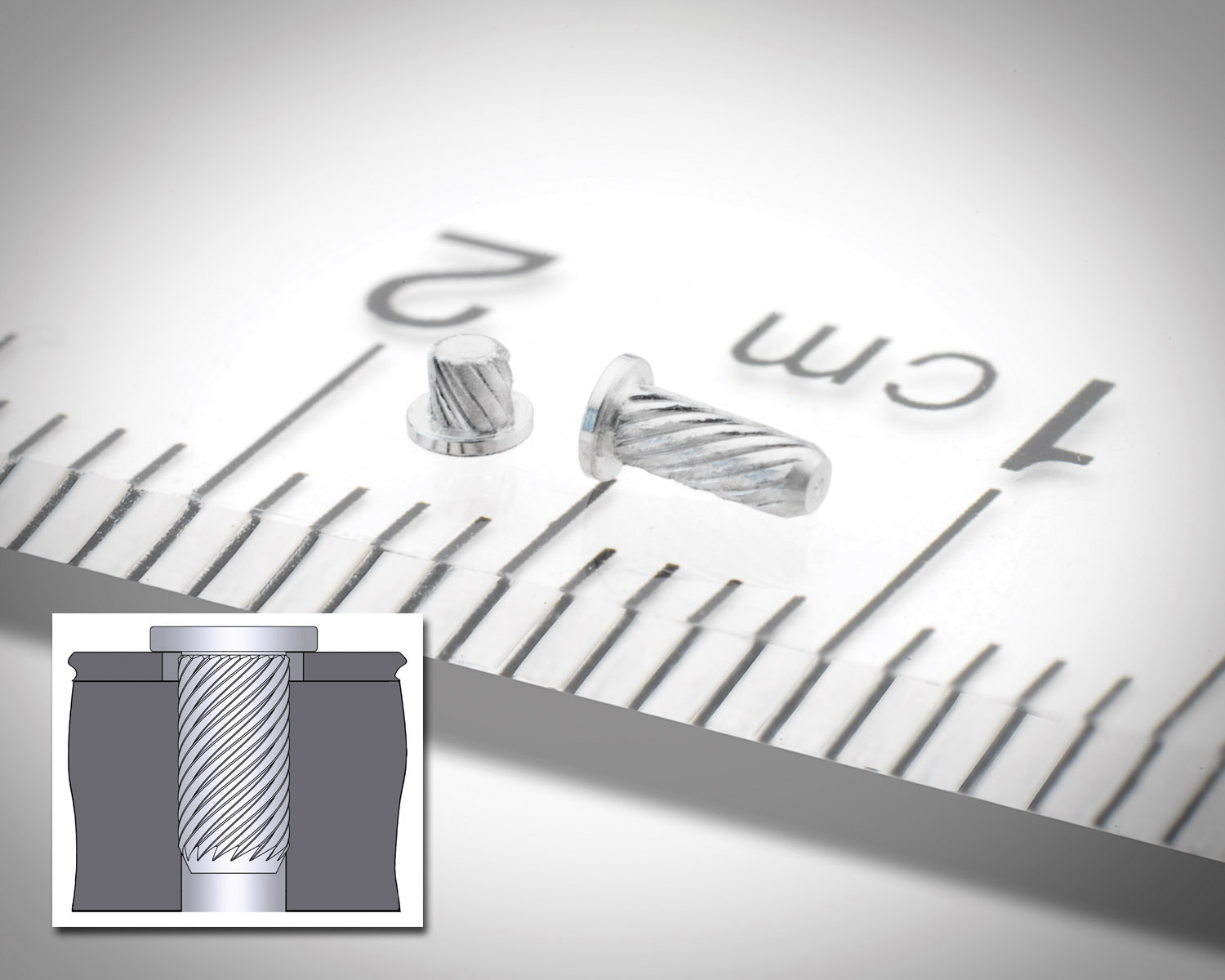Aluminum and stainless steel pins from PennEngineering® provide cost-effective alternatives to micro screws for attaching top panels to base panels or chassis in compact electronic assemblies. They will attach top panels of any material to a base or chassis manufactured from common cast metals (such as magnesium and aluminum) or plastics (such as ABS and printed circuit boards). The pins ultimately eliminate many of the costs and issues associated with screws and integrate unique design features promoting reliable and effective performance.
TackSert pins offer multiple advantages over screws by eliminating needs for mating threads from tapped holes or inserts and the rework frequently required due to screw cross-threading and driver bit “cam-out.” Patches intended to prevent fastener loosening in service are unnecessary.
Among design features, a tapered tip assists in pin location during the installation process, a specially engineered diagonal broaching knurl (instead of threads) creates a firm interference fit without hole-tolerance issues, and a low-profile head minimizes protrusion on the top-panel.
The TackSert fastener family includes TK4™ pins (400 Series stainless steel) for broaching into castings, brittle materials, printed circuit boards, and plastics and TKA™ aluminum pins for broaching into printed circuit boards and plastics. The fasteners are available in a variety of lengths to accommodate a range of top panel thicknesses. Press-in installation without heat or ultrasonics is achieved simply by preparing properly sized mounting holes in the top sheet and base panel or chassis, placing the pin through the hole in the top sheet and into the through or blind mounting hole of the base panel, and then applying sufficient squeezing force using punch and anvil until the head of the pin contacts the top sheet. Pins can even be installed automatically for high-volume jobs.
Detailed specifications, fastener drawings and 3D models, and performance data (Bulletin MPF) for these RoHS-compliant pins can be viewed and downloaded for free at the company’s website.

Filed Under: M2M (machine to machine)




